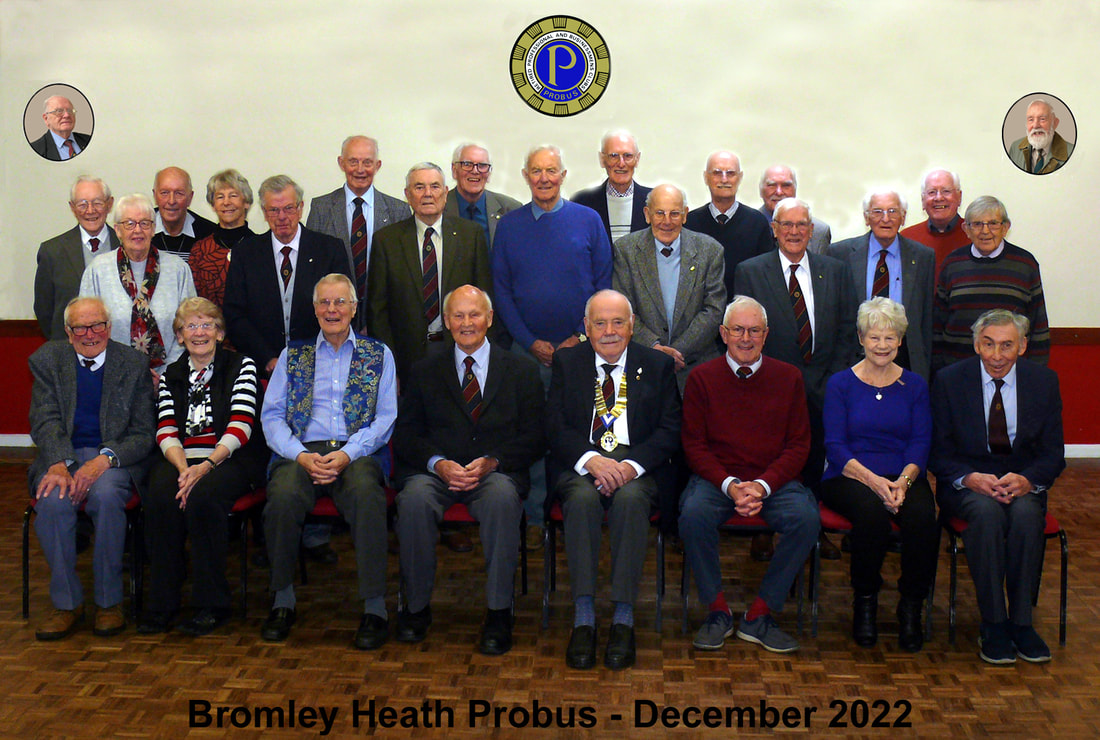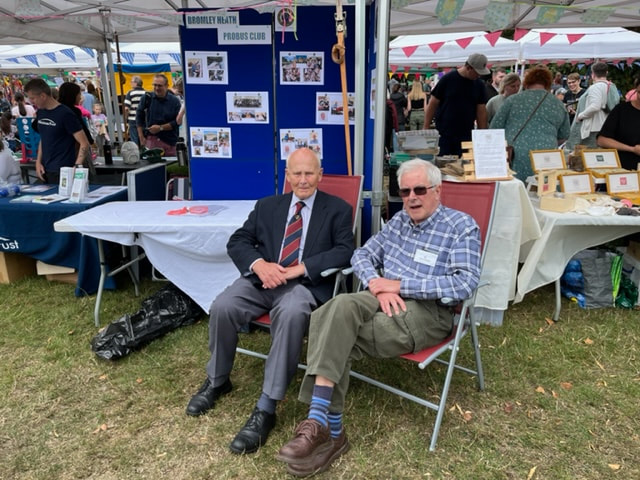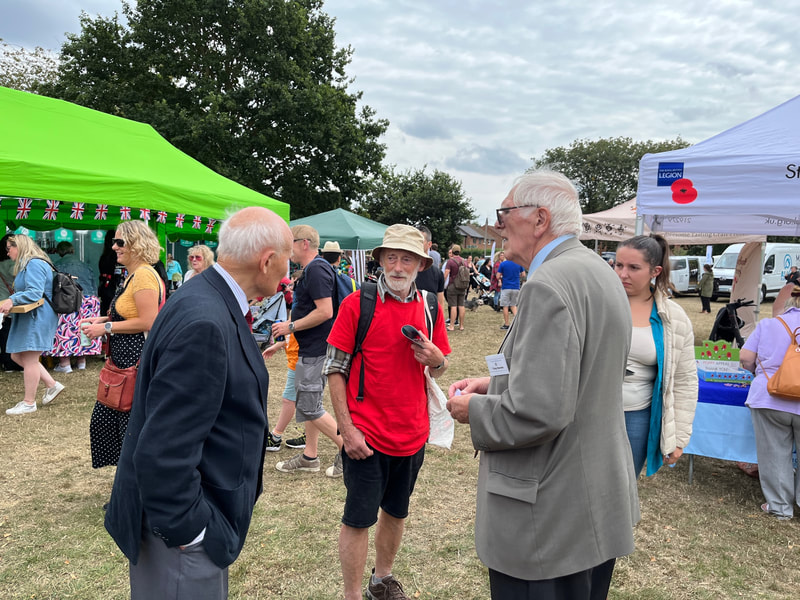
President Helen Bishop
Welcomes new members
Pat Moore and David Priddy
July 4th 2024
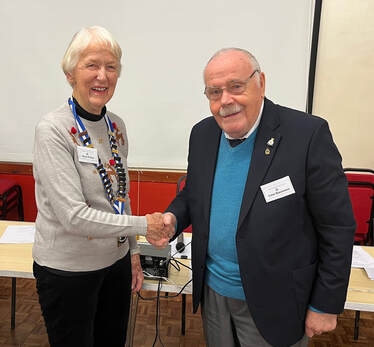
Outgoing President Peter Blackmore installing new President
Helen Bishop
December 7th 2023
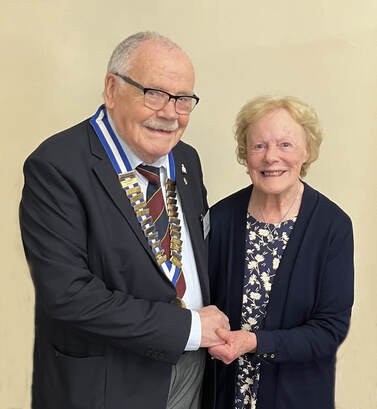
President Peter
pleased to welcome new member
Rita Carmody
May 4th 2023
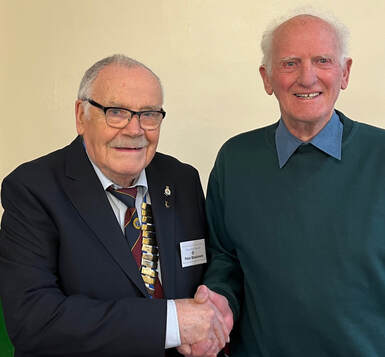
John Welsby
Welcomed as a new member by
President Peter Blackmore
April 6th 2023
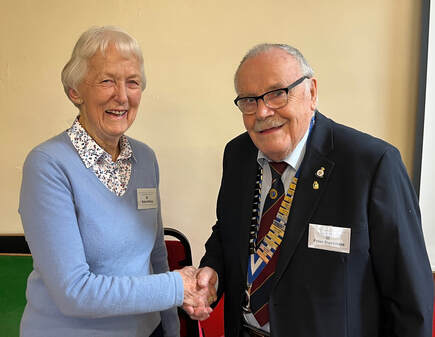
March 2nd 2023
President Peter Blackmore welcomes
Helen Bishop
as a new member
President Peter Blackmore welcomes
Helen Bishop
as a new member
December 1st 2022 - Annual General Meeting
New officers confirmed then a group photograh followed by a drink and nibbles.
New officers confirmed then a group photograh followed by a drink and nibbles.
September 3rd 2022
We were at the Party in the Ponds at Vassals Park to show off our activities and try to encourage new members. We had a good display board which let us tell our story.
We were at the Party in the Ponds at Vassals Park to show off our activities and try to encourage new members. We had a good display board which let us tell our story.
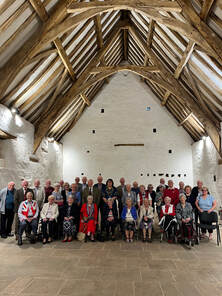
June 2nd
We did not have a meeting at the Assembly Hall as we decided to celebrate the Queen’s Jubilee with a cream tea at the Winterbourne Medieval Barn. First we had a tour of the barn which was built in 1342 and is a grade II* listed building. It was abandoned for many years but after purchase by South Gloucestershire Council in 1998 it has been stabilised and a major transformation has made it into a magnificent community centre. Our cream tea was supplied by AHM Catering Experience and, as usual from them, was delicious.
Pictures in the Gallery
We did not have a meeting at the Assembly Hall as we decided to celebrate the Queen’s Jubilee with a cream tea at the Winterbourne Medieval Barn. First we had a tour of the barn which was built in 1342 and is a grade II* listed building. It was abandoned for many years but after purchase by South Gloucestershire Council in 1998 it has been stabilised and a major transformation has made it into a magnificent community centre. Our cream tea was supplied by AHM Catering Experience and, as usual from them, was delicious.
Pictures in the Gallery
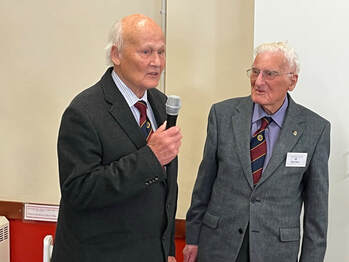
President Ken Splilman was pleased to welcome new member
Ron Beer
on May 19th 2022
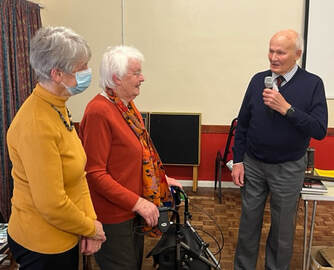
Delighted to welcome our first lady members on Feb 3rd
Val Ball and Marcia Clift
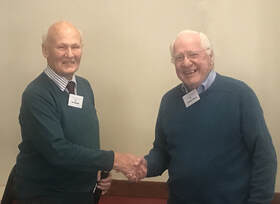
On November 4th 2021 President Ken Spilman (L) welcomed new member Graham Walker into the club
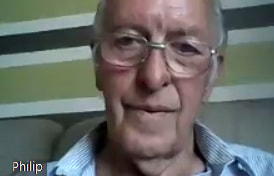
On May 28th 2021 we were pleased to welcome new member Phil Scull to the club with a Virtual Induction.
